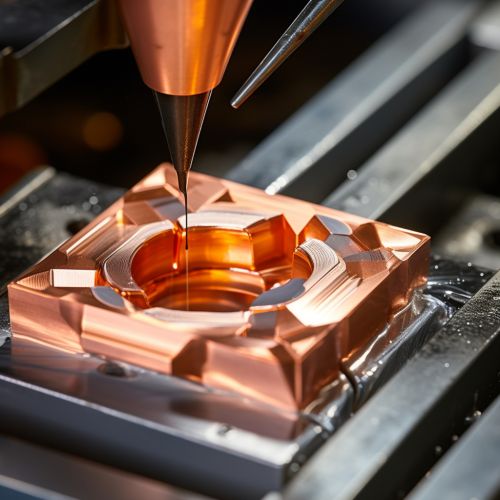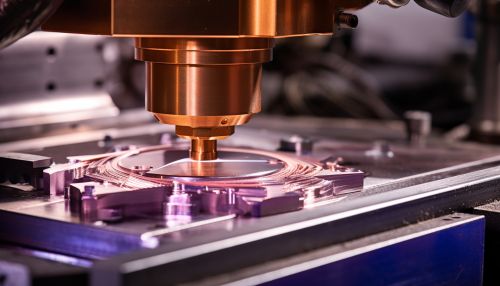Electroless Plating
Introduction
Electroless plating, also known as chemical vapor deposition or auto-catalytic plating, is a non-galvanic type of plating method that involves several simultaneous reactions in an aqueous solution, which occur without the use of external electrical power. The reaction is accomplished when hydrogen is released by a reducing agent, normally sodium hypophosphite, and oxidized thus producing a negative charge on the surface of the part.
History
The process of electroless plating was first discovered in 1946 by Abner Brenner and G.R. Riddell. The two scientists were working at the National Bureau of Standards with the goal of developing a method for electroplating aluminium that would replace the zincate process. During their research, they discovered that certain metallic ions could be reduced to the metallic state without the application of an electric current.
Process


The electroless plating process involves several steps, each of which must be executed carefully to ensure a quality coating. The steps include pre-treatment, activation, acceleration, plating, and post-treatment.
Pre-treatment
The pre-treatment step involves cleaning the surface of the part to be plated. This is typically done using a series of chemical baths to remove any dirt, oils, or other contaminants that may interfere with the plating process. The part is then rinsed thoroughly to remove any residual cleaning agents.
Activation
The activation step prepares the surface of the part for the plating process. This is typically done using a solution of palladium chloride and stannous chloride. The palladium ions are reduced to palladium metal on the surface of the part, providing a catalytic surface for the subsequent plating reaction.
Acceleration
The acceleration step removes the tin from the surface of the part, leaving behind only the palladium catalyst. This is typically done using a solution of sodium or potassium persulfate.
Plating
The plating step is where the actual electroless plating reaction takes place. The part is immersed in a solution containing a metal salt, a reducing agent, and a pH adjuster. The metal ions in the solution are reduced to metal by the reducing agent, and then deposited onto the surface of the part.
Post-treatment
The post-treatment step involves rinsing the part to remove any residual plating solution, and then drying the part. In some cases, a post-plating heat treatment may also be performed to improve the properties of the coating.
Applications
Electroless plating has a wide range of applications in various industries due to its ability to coat complex geometries, provide uniform thickness, and offer superior corrosion and wear resistance. Some of the key applications include:
- Electronics: Electroless plating is widely used in the electronics industry for the deposition of conductive layers on circuit boards and other electronic components.
- Automotive: In the automotive industry, electroless plating is used for coating parts like fuel injectors, brake components, and power steering components to enhance their durability and performance.
- Aerospace: In the aerospace industry, electroless plating is used for coating components to protect them from corrosion and wear in harsh environments.
- Oil and gas: Electroless plating is used in the oil and gas industry for coating components used in drilling and extraction operations to enhance their resistance to corrosion and wear.
Advantages and Disadvantages
Like any other process, electroless plating has its advantages and disadvantages.
Advantages
- Uniform Thickness: Electroless plating provides a uniform coating thickness over all surfaces, regardless of their shape or complexity. This is a significant advantage over electroplating, which can result in uneven coating thicknesses.
- Corrosion and Wear Resistance: Electroless plating provides excellent corrosion and wear resistance, making it suitable for use in harsh environments.
- No Electricity Required: As the name suggests, electroless plating does not require the use of electricity. This can result in significant cost savings, particularly for large-scale operations.
Disadvantages
- Limited Metal Choices: Electroless plating is limited to a relatively small number of metals, including nickel, copper, and gold. This can limit its applicability in certain situations.
- Slow Deposition Rates: Electroless plating typically has slower deposition rates than electroplating. This can result in longer process times, particularly for thick coatings.
- Higher Cost: The chemicals used in electroless plating are typically more expensive than those used in electroplating. This can result in higher overall process costs.
